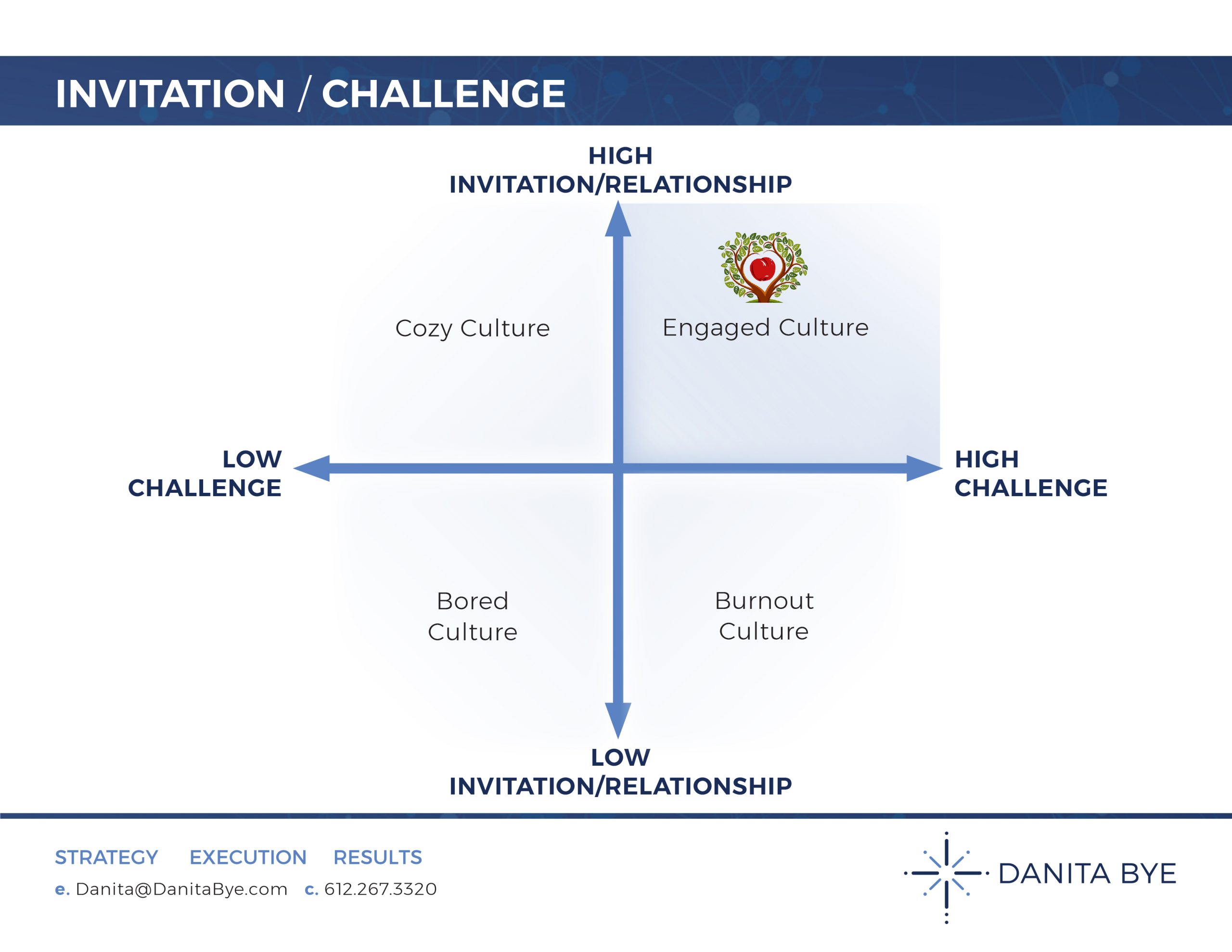
How Great Leaders Achieve Excellent Sales Growth Results (Video Also)
Employee disengagement is wreaking havoc on the productivity of not only salespeople but almost all Millennials in the workplace. It’s also curtailing business and sales results. How do you rate your company’s employee development process?
Invite and Challenge your Next-Gen Leader to Excel
Keeping your NextGen leader engaged is an essential growth strategy. ~ Danita Bye Share on XOnly 33% of America’s employees are engaged at work. So, what is the other 67% contributing to your business?
Not much.
Let’s look at some of the telltale signs of disengaged employees:
- Low energy causes them to do the bare minimum.
- They have limited or zero sense of purpose in their work.
- View the organization and its values as negative.
- Poor collaboration and communication skills.
Disengagement sabotages your growth strategies!
So, how might you create an engaging culture? Gallup defines engaged employees as “involved in, enthusiastic about, and committed to their work and workplace.”
We looked at the results when the invitation and challenge to excel are misaligned. Now, we’ll look at another unsuccessful strategy – when invitation is low, but challenge is high.
Finally, we’ll see what can happen when you use the Invitation / Challenge matrix effectively.
First, this is how Steve got burned out….
Low Invitation and High Challenge Creates a Burnout Culture
After three months at his new job, Steve knows he is failing. At the start of the day, the wretched scorecard with his monthly goals pops up on his computer screen to remind him that he’s missing the mark. He’s been working late trying to cram in the technical info he feels he needs to improve his performance.
But, there’s no helping hand, no mentoring or coaching to guide a sales rookie like him along the treacherous, rocky road of cold calling, his first prospect contact, or the dreaded Monday-Morning-Sales-Results meeting. After every failed sales call he feels more discouraged.
The stressful culture in the office is spilling over to Steve’s personal life, and he has increasingly intense fights with his girlfriend. This, of course, distracts him even more at the office and has a negative influence on his already shaky sales results. Steve is not feeling well, and he visits the doctor almost every week with a new complaint. He is secretly praying that the doctor would write him a sick note so he can escape the toxic office environment for a few days.
He knows he’ll probably be fired soon. He might as well resign now and look for something less stressful. He’s burned out…in only 3 months.
Now, let’s look at Angie’s on-boarding.

If you are looking for fresh ideas to keep your emerging leader engaged, I invite you to use the Invitation / Challenge matrix to assist your next-gen leader to grow into the sales superstar you know they can be. Get ideas from Bob Klein, my first sales manager at Xerox,and Janie Jasin, my speaking coach.
High Invitation and High Challenge Create a High-Performance Culture
After spending just two weeks at her new job, Angie knew she had hit the jackpot. She enjoys working with her new colleagues. The atmosphere is so fun and inviting that she is really looking forward to coming to work. She never thought this could be possible!
Her boss is encouraging and helpful. On her first day, he assigns a senior and junior colleague to show her the ropes. He takes a personal interest in her development and has helped her draft a strategic plan to guide her towards reaching her goals and dreams. He offers great advice and shares his personal experience of both successes and failures openly. He values her opinion and tells her that he enjoys learning about new technologies from her. He feels her skills will help them deal with the demands of the digital decade.
However, Angie knows that he expects her to grow, both personally and professionally. When she feels the sting of a new prospect’s rejection, he is quick to help her debrief the experience. Then he challenges her to find the valuable lessons from each failure. He is teaching her to celebrate every “no” and shows her how that failure is making her wiser and stronger for her next call. The accountability culture in the office inspires her to do her best and she is always looking for ways to up her game.
You can also watch a short video on this topic HERE.
Summary
In this final scenario, it is clear both invitation and challenge form an integral part of an engaged company culture. This culture encourages team members to inspire and assist each other, and the burden isn’t placed on one person to ensure the company’s success. At its core, the Invitation / Challenge framework is a powerful two-way coaching tool that benefits you, the mentor, your emerging leader, and your business.
Bob and Janie’s coaching and mentoring strategies of sharing their expertise and knowledge with me, while challenging me to constantly seek ways to up my game, was one of the most important leadership development experiences of my career.
Leadership Lesson: An authentic relationship with your next-gen leader forms the foundation for challenging him or her to grow together.
Leadership Question: What do you need to do to create an engaged culture and drive real business growth?


Mike Dunn
Posted at h,I don’t disagree with the 4 cultures, but I do disagree with labeling them cultures! Culture ALWAYS emanates from the culture club. For me the problem with the disengaged groups lies with the head of the club, e.g., CEO, President, Owner…whomever owns the culture.
Founder/President Back2Basics Management
Danita
Posted at h,Yes, I agree with you – culture emanates from the “culture club” – the leaders. So, if we don’t label them as cultures, what label would you use? Maybe, just call the upper left-hand quadrant Boring (Or some other descriptive words!) Thoughts?